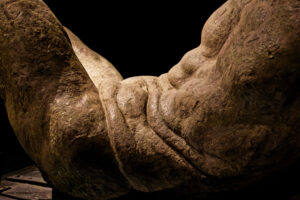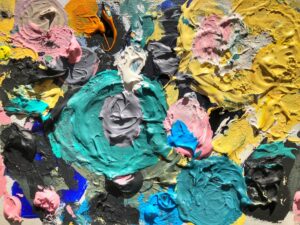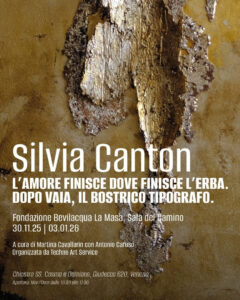In this article, you will explore the artistic techniques that define painting and sculpture, providing you with an in-depth understanding of the materials and methods used by artists. You will discover how technical choices influence the end result of works of art, allowing you to better appreciate the work of artists. With these insights, you will improve your ability to analyse and appreciate works of art, thus enriching your aesthetic experience.
Historical overview
The history of art is a fascinating journey that spans millennia, reflecting cultural, social and technological changes. From prehistory to the present day, each era has contributed distinctive styles and techniques, highlighting the relationship between human beings and their environment. Understanding this historical development helps you to better appreciate works of art and the context in which they were created.
Evolution of painting
Painting is a visual language that evolved from cave art to the sophisticated oil techniques of the Renaissance. Techniques such as watercolour and acrylic expanded the possibilities of expression, allowing artists to capture emotions and atmospheres with a new vividness. Each artistic period has influenced painting in unique ways, from Minimalism to Street Art, demonstrating its continuing ability to evolve.
Evolution of Sculpture
Sculpture has ancient roots, going back to primitive forms such as stone figurines. With the classical era, it developed into realistic works such as Greek statues. The transition to the Renaissance paved the way for sculptors such as Michelangelo, who elevated sculpture to new heights of emotional and technical expression. In more recent times, contemporary sculpture has embraced innovative materials and techniques, challenging traditions and always seeking new means to communicate meaning.
Techniques in painting
Painting, in particular, is distinguished by the variety of techniques used by masters over the centuries. Each of these techniques offers a unique way of expressing emotions and visual narratives. From traditional methods to modern innovations, painting techniques include oil painting, watercolour, tempera and more, each with its own specific characteristics and artistic applications.
Oil painting
Oil painting is one of the most renowned techniques, characterised by the use of pigments mixed with vegetable oils. This method allows for a wide range of shades and textures, making it ideal for depicting complex details and depth. Artists such as Rembrandt and Van Gogh used this technique to create unforgettable works that explore light and colour in innovative ways.
Watercolour techniques
Watercolour techniques are based on the use of pigments diluted in water, allowing for greater fluidity and transparency in the works. This versatility allows for serene and luminous effects. Artists can use different materials such as thick paper or special palettes to counteract the fluidity of water.
Watercolour painting can be executed in various styles, from the ‘wet-on-wet’ technique, where colours are mixed directly on wet paper, creating soft shades, to the ‘dry’ technique, where colours are applied on dry paper for more control and definable details. This technique requires precision, as errors are difficult to correct and the final result is often influenced by the interaction of the colour with the water and the surface used. Artists such as J.M.W. Turner revolutionised the use of watercolour, taking it to new levels of complexity and emotional expression.
Techniques in sculpture
Sculpture offers a wide range of techniques, each with its own specific requirements and aesthetic results. These can be different materials such as stone, wood, metal and clay, each requiring unique approaches to the creative process. Understanding these techniques allows you to better appreciate the works and intentions of artists, as well as providing you with practical tools for your artistic practice.
Carving Methods
Among the oldest techniques, carving allows you to remove material from a block to reveal the desired shape. You can use tools such as chisels and hammers to shape stone or wood, creating detail and texture. Famous sculptors, such as Michelangelo, employed carving methods to create extraordinary works, making this technique a cornerstone of sculptural art.
Modelling and casting
Modelling and casting are fundamental techniques in sculpture, allowing you to create complex and detailed forms. With modelling, you use malleable materials such as clay or wax to construct a form. Once the model is complete, the casting process allows you to transform the prototype into metal, creating durable and valuable works. Through studying artists such as Alberto Giacometti and Henry Moore, you can learn how these techniques were used to express new ideas and concepts.
Modelling involves working with materials that you can easily shape and manipulate. Wax and clay are the most common. You can then create a life-size model, which is then used in the casting process. After modelling, a plaster cast or a rigid mould is made for casting in metal, often bronze. This technique has made possible the creation of iconic statues throughout history, allowing for high quality reproduction of the works. With casting, you gain the ability to create more complex works, from figurative to abstract sculpture, thus expanding your artistic possibilities.
Notable artists and their techniques
By exploring the works of notable artists, you can identify techniques that have defined generations and artistic schools. The innovations and personal styles of each artist offer valuable insights into how painting and sculpture have evolved over time. From Caravaggio to Michelangelo, their technological choices reflect the synthesis of creativity and technical mastery.
Masters of Painting
When thinking of the masters of painting, names like Leonardo da Vinci and Van Gogh immediately spring to mind. Their techniques, such as Da Vinci’s chiaroscuro or Van Gogh’s emotive brushstrokes, profoundly influenced the approach to painting, creating works that speak to the observer on an emotional and intellectual level.
Masters of Sculpture
In the world of sculpture, artists such as Michelangelo and Rodin innovated with forms and materials, transforming stone into vibrant expressions of human life. The techniques of these masters, from carving to modelling, show an incredible understanding of form and movement.
Michelangelo, in particular, revolutionised sculpture with works such as the David, where the counterpoint shows unparalleled elegance and fluidity. Using marble, he created a palpable sense of reality, thanks to his ability to capture light and shadow on the surface of the material. Rodin, with works such as ‘The Thinker’, also took sculpture to new levels of expression, emphasising emotion and dynamism in poses. These artists not only marked the history of art, but also set standards that many contemporary artists continue to follow.
The Role of Light and Colour
In painting and sculpture, light and colour are not just visual elements, but fundamental tools for expressing emotion and atmosphere. The ability to manipulate light makes it possible to create depth and dimension, while the use of colour greatly influences the perception of the work. Understanding how these elements interact will create a richer and more nuanced artistic experience.
Colour theory in painting
Colour theory is based on relationships between colours and the emotional impact they can generate. Through the colour circle, you can explore complementary and analogous colour combinations, discovering how each choice affects visual harmony. Artists such as Monet and Van Gogh engineered colour to evoke unique feelings and atmospheres.
Light and shadow in sculpture
Sculpture takes advantage of light and shadow to emphasise shapes and details. Through the manipulation of light, an artist can accentuate or conceal aspects of matter, creating dynamism. This interaction helps to bring the sculpture to life, allowing the viewer to perceive forms in different ways depending on the angle.
Light and shadow play a crucial role in defining three-dimensionality in sculpture. For example, sculptors such as Michelangelo used lighting strategies to enhance the musculature and details of the human body. Deep shadows can suggest volume and create dramatic contrast, making the work more engaging. Strategic positioning of light sources can completely transform the perception of a piece, emphasising certain features and making the sculpture come alive in the eyes of the viewer.
Contemporary practices
In today’s context, artistic practices are evolving rapidly, integrating new technologies and interdisciplinary approaches. Contemporary artists employ innovative materials and mixed techniques, contributing to a lively dialogue between tradition and modernity. Interactive exhibitions and immersive installations challenge conventions, inviting the public to actively participate in the artistic experience.
Innovations in Painting
Innovations in contemporary painting manifest themselves through the use of unconventional media and the integration of digital technologies. Artists such as Gerhard Richter and Julie Mehretu experiment with layers of materials and overlapping techniques that transform visual perception, making paintings dynamic and engaging. In addition, digital painting and wall installations expand the boundaries of pictorial creation.
Innovations in Sculpture
Contemporary sculpture is distinguished by the diversity of materials and technologies employed. Artists such as Anish Kapoor and Ai Weiwei use techniques such as 3D printing and the assembly of recycled materials, creating works that dialogue with architecture and the surrounding environment.
Sculpture, an ever-evolving field, presents incredible innovations through the use of advanced technologies. 3D printing, for example, allows the creation of complex forms that are impossible to achieve with traditional methods. Moreover, artists such as Thomas Heatherwick are breaking new ground by exploring how light and movement interact with sculptural works. These approaches not only enrich the visual language but also encourage deep reflection on the materiality and social impact of art.
Conclusion
In conclusion, by exploring artistic techniques, you will have the opportunity to enrich your understanding of both painting and sculpture. These insights will enable you to appreciate not only the works of art, but also the creative process behind them. Armed with this knowledge, you can approach the art world with a new perspective, discovering the richness and complexity of each technique. Your artistic experiences will thus be transformed and amplified.



